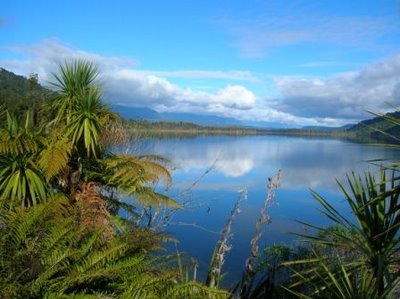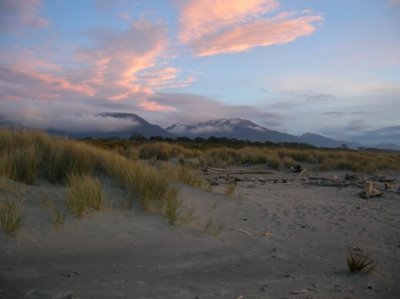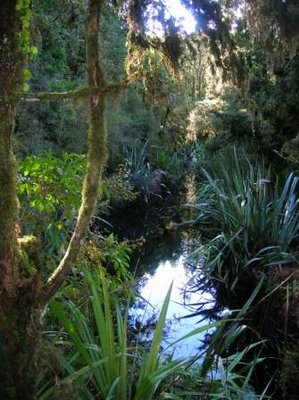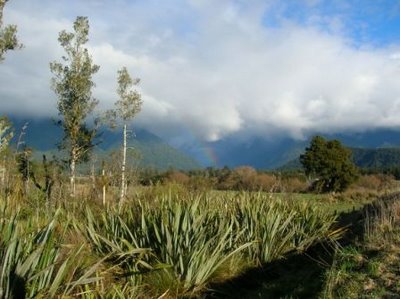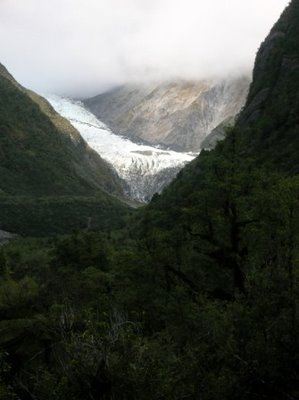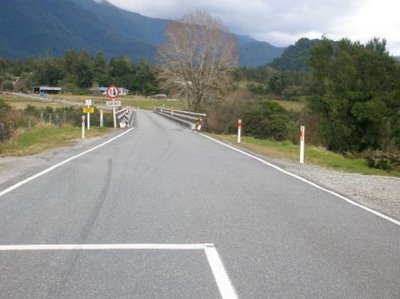I've lived in my share of small towns before now. Point Reyes Station, Bolinas, Port Angeles, and Denali Park all come to mind. But somehow in each of those it was different. Perhaps because I was seasonal, I didn’t get to know people so well that I started recognizing folks as I bumped into them from one place to the next.
During my first week here, I had a nice long talk with the folks at the local paper, as I was putting my ad in the classifieds, trying to find myself a flat. One of them called me back as soon as they’d taken an ad for a flat available, before it ran in the next day’s paper, just to be helpful. Then I ran into her at a store later that day, where she asked me if I’d seen the place yet and if it had worked out. (I had. It hadn’t.)
The property manager dealing with rentals told me her colleague was moving to Oz (Australia), and I should see if she had any furniture for sale. When I spoke to her colleague, Lisa, she told me her family had all claimed things. Later that weekend, as I was poking through things at a garage sale, Lisa came out of the kitchen to say hi – having recognized my voice…
These sorts of things happen every day. Pretty soon, I’ll know everyone, and they’ll all know me. A curse and a blessing, I suppose.
Have you ever stayed sitting in your car for a bit, to hear the end of a story, or a song you like? No need for that here. The local radio station stitches us all together with a musical thread winding in and out of shops, homes, and cars throughout the coast. There are other radio stations, but only one local to the west coast. Lucky for me, it’s music I enjoy, so it’s playing in my car as I drive around town. As I leave the car to go into the video store, it’s playing in there, so I hardly miss a beat, or a news story. As I walk next door to the dairy (read bakery/café), it’s playing in there as well. The same goes for the gas station, grocery store and just about every where else.
One of my favorite things about the small town – or perhaps its just New Zealand, but I find that hard to imagine – is the level of trust for everyone. When I was looking at cars to buy, each of the dealers in town let me take out cars for a test drive, without so much as looking at my license, or any ID. “I work at the local DOC office.” “Ok, good as gold, mate.” They know where to find me. When I was unsure about buying the Subaru, they let me take it for the weekend, see if I liked it, have it looked over by a mechanic. No money or ID changed hands (though I had already dropped nearly $600 renting a car from them for two weeks). I took it to ChCh (Christchurch) for the weekend, and they were fine with that. Then when I wasn’t able to muster all the cash right away, they signed the car over to me anyhow, and said come back in a few days when I had the cash. “No worries mate. Good as gold.” And so it was.
The same goes for the smaller shops. I was looking at some pillows for my new couch the other day, but wasn’t sure which ones to get. The store told me to take all three sets home, see what I thought, and bring back the ones I didn’t want. They wrote down what I took, the prices, and my phone number, gave me their business card and let me walk out the door.
While it may all seem like Andy Griffith-land here, I should tell you DOC (or the Department of Conservation, where I work) has been the victim of theft twice in the last week. Last week someone broke into one of our camping lodges and stole the hot water heater and our washing machine. Then over this past weekend someone stole the tractor we’ve had parked for weeks at the foot of a trail we’re upgrading. Seems hard to imagine someone can go about using that locally without explaining where they got a new tractor… We’ll see if it turns up.
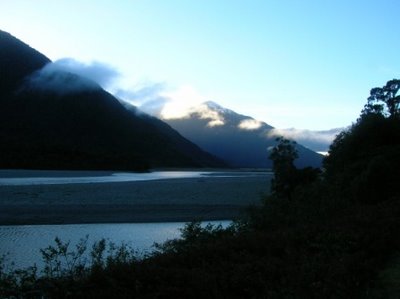 Sunrise in the Haast valley, heading east into the Pass.
Sunrise in the Haast valley, heading east into the Pass.
